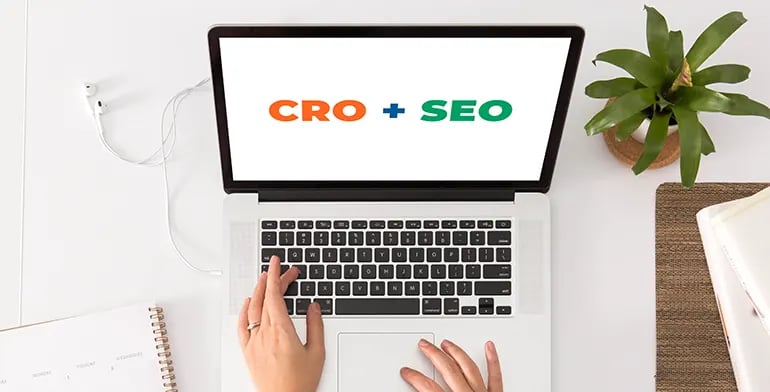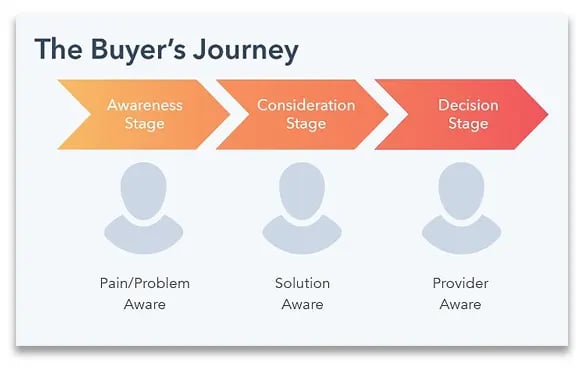Driving Revenue and Conversions with CRO
Your website may be seeing an impressive (or at least a reasonable) amount of traffic, but your leads aren’t converting, and you aren’t seeing the sales volume you’d expect or need. The cause? It’s most likely the fact that your conversion funnel is failing to engage and drive your users. It is likely that your site lacks effective CRO. CRO (Conversion Rate Optimisation) is the practice of optimising website pages to drive conversions, via the calls to action on those pages.
SEO and CRO are often thought of as different strategies, but the two disciplines go hand in hand, and must be used in tandem, aligned with the same objectives, to drive the most effective results. Ranking high in Google won’t make much difference to your revenue goals if you haven’t got a plan to convert your visitors, you risk them bouncing off your site to buy from your competitors.
What is SEO?
Search Engine Optimisation (SEO) is the practice of improving your website’s ranking in organic results, on search engines such as Google, Bing etc. It’s essentially the art of proving to those search engines that your website is the most relevant and useful answer to a user’s search. In order to collect this information, the search engine bots crawl your website and index your web pages. Your site is then reviewed against hundreds of ranking factors to determine where your site should sit on the search engine result pages (SERPS) for the search terms you are targeting.
However, while effective SEO is vital to the performance of any website, it is only a part of the process needed to actually turn those visitors into prospects and customers.
What is CRO?
CRO isn’t just another trendy marketing acronym. Conversion Rate Optimisation is extremely important for any business aiming to obtain customers via their website (whether ecommerce, B2C or B2B) because it is designed to take visitors on a website and lead them through an appropriate user journey towards conversion.
It’s fair to assume that most companies aim to use their website to attract and convert visitors into qualified leads/customers. Using CRO as part of a best practice SEO strategy can have a dramatic impact on the percentage of users that ‘convert’, that is complete a specific action on your website, such as clicking a button, filling out an enquiry form, signing up to a newsletter or making a purchase, etc. But it’s not as easy as it sounds, a lot of CRO problems aren’t quantifiable or have a clear-cut answer. Often, it’s a case of digging deeper, going beyond the data, and using psychology to gain a better understanding of the bigger picture.
Why SEO is Not Complete Without CRO
SEO and CRO are perfect partners. One on hand, SEO aims to increase the quantity and quality of organic website traffic, while CRO aims to increase the proportion of that traffic that converts while on the site.

Delivering Higher Revenues with SEO and CRO
By implementing a data-led, best-practice SEO strategy that includes aligned, effective CRO, your site should not only attract more traffic but also convert a higher proportion of it at a much better rate, whether your goals focus on macro or micro conversions.
Examples of macro conversions:
- Requesting a quote
- Service subscriptions
- Completing a checkout
Examples of micro conversions:
- Signing up for a newsletter
- Downloading eBooks
- Taking steps towards checkout such as browsing pages or adding items to a cart
CRO can also be used to increase AOV (Average Order Value). A higher AOV is key to increasing revenue and improving efficiency, after all, higher value sales are more profitable and efficient in terms of resource than the same number of lower value ones.
CRO works on the basis that it’s much easier to increase the value of a customer’s cart once they have already committed to making a purchase from you. Cross selling and upselling are both staples of a successful customer-centric sales strategy and can prove to be pivotal in increasing revenue. When aligned with an effective customer service and nurture strategy they can also measurably impact the lifetime order value of a customer.
Understanding the Buyer’s Journey
Successful CRO relies on the alignment of your SEO and CRO strategies with your buyer’s journey. Leveraging them effectively allows you to match the correct content with the intent of your potential customers, providing a better user experience and driving conversion. Examining the buyer’s journey through your website with CRO in mind can offer valuable insight into why your website may not be converting as you had hoped. It also offers insight into the psychology of your user base which in turn informs the right CRO strategy for your website.

Graphic courtesy of HubSpot
Post-Conversion Nurture
While CRO is vital in the journey towards conversion, the value of lead nurture post-conversion is often a step in the conversion funnel that gets overlooked. Marketers are often focused on gaining new leads, rather than nurturing their old ones. However, a repeat customer is statistically more likely to re-convert and purchase again than a first-time buyer because they’ve already tried your product/service, they’ve had a fantastic experience at every stage of their buyer’s journey and now they’re back for more. They’re clearly already interested in what you have to offer which results in spending less time and money on these types of conversions, increasing the lifetime order value of the customer, and leading to greater profit. Implementing CRO for existing customers is useful to make their buyer’s journey smooth, easy and efficient because existing customers do not want or need the same journey that non-customers do.
Better UX (User Experience) To Achieve Higher Revenue
If your UX (User Experience) isn’t engaging or user friendly it can have a direct impact on your search ranking and indicate how relevant your website is to that particular search query. Page load time and page speed is a very important UX factor from both a user and search engine point of view [link to recent CWV blog). As effective UX is key to the conversion process it is also relevant to effective CRO.
Bounce rate is one of the metrics that indicate UX and CRO effectiveness. It expresses the percentage of your website users that leave your website after viewing one page, which often means that they didn’t find what they were searching for or couldn’t see a route through your website that matched their needs. Search engines factor bounce rate into their algorithms because it is directly linked to the relevance of your website. While there are many reasons that bounce rate might be high, commonly it’s related to slow loading, confusing UX and poor web design. Effective CRO can help tackle all of these concerns, better aligning your website to your visitors’ needs.
Conversational Marketing
Conversational marketing is a resource efficient and speedy way to move your potential customers through the sales funnel. By engaging with your website visitors in real time via chat bot AI and live chat it is possible to help reduce friction as well as overcome potential objections and conversion blockers that otherwise could cause visitors not to convert. It can even help increase your AOV by upselling before the customer checks out.
Another rapidly expanding type of conversational marketing relevant o effective CRO is voice search. It allows users to search the internet using smart devices like Amazon Echo’s and Google Home devices rather than typing. Since being introduced by Google in 2011 the use of this medium has become more commonplace, at the start of 2021 a massive 7 in 10 of the UK public had used a voice assistant in the last month. With the success of voice search rising, it’s imperative that your website is optimised for voice search.

Using CRO to Leverage Value from Website Traffic
Extracting full value from the traffic landing on a website requires insight and expertise in leveraging the full CRO toolkit. Effective SEO is not a single discipline, nor does one size fit all. Each business requires its own data-led strategy. What is clear is that well-applied CRO is always necessary to fully leverage the value of your website visitors.
If you have any questions or would like to discuss the best solution to solve your CRO challenges, we would love to hear from you. You can give us a call or use the form on this page and one of the team will get back to you ASAP.







